
As a kid, I played this game with my friend where we’d blindfold each other and take random food or condiments from the fridge and get the other person to guess what it was. It would always end in tears when one of us reached for the hot sauce. All of this by way of saying, I’ve always been interested in weird things you can actually eat.
I also come from a long line of frugal and resourceful women who don’t like to throw anything out if it can be useful. So when it comes to vegetable gardening, it’s no surprise that I’m always looking for ways to use every part of a plant.
I’ve already instituted several composting methods which is a great way to turn twigs, leaves, and stems into next season’s nutrient-rich soil. But what about cooking up those leaves and stems (and other bits) into delicious recipes? Below you’ll find a list of ten weird things you can actually eat from your garden and how to prepare them.
Discover 9 garden recipes spotlighting the delicious possibilities of home gardens—when you access the FREEBIE Recipes from Your Garden, right now!
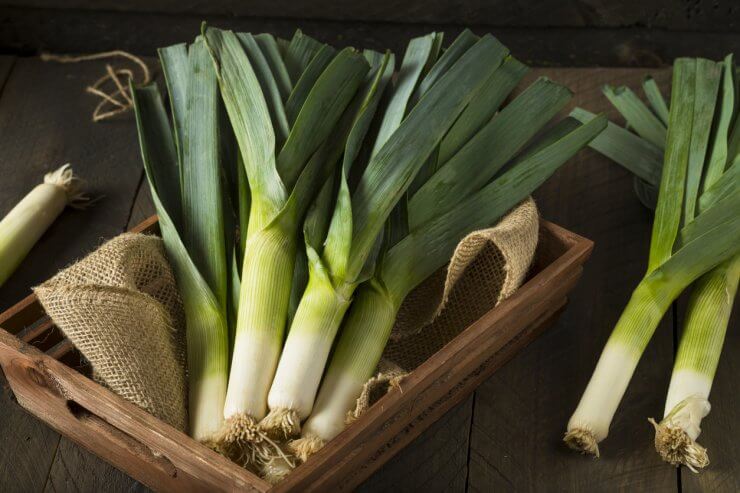
1. Leek tops
When cooking with leeks, most recipes call for separating the white and light green parts of the leek and discarding the dark green leaves. Before my own investigation, I used to think leek tops were only good when simmered into a soup or stock and then removed once the flavor leaked out. (See what I did there?)
Like a bad boy-turned-good in any rom-com from the last 30 years, you can soften the otherwise tough exterior of leek tops with a little love and good cooking. The secret is to chop these tops and throw them in a pan with your favorite fat (butter, oil, bacon grease, etc.) and cook for about 10 minutes. Throw in some cheese or rice or add to pasta with a cracked pepper finish. Yum!
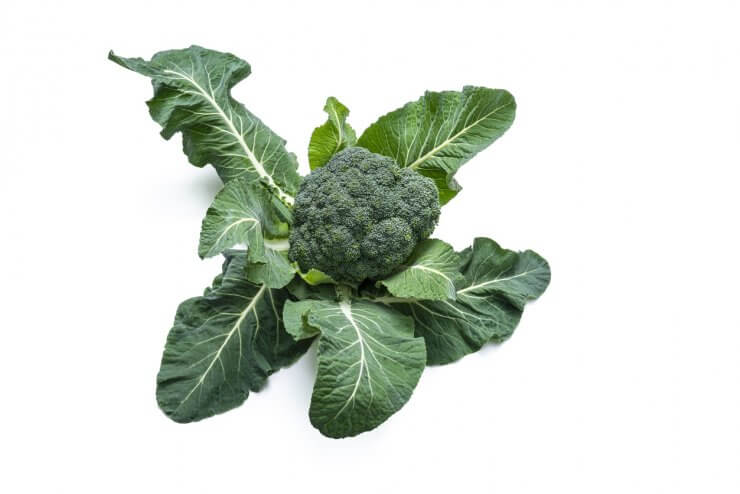
2. Broccoli leaves
If you’re only used to seeing rows of broccoli heads lined up in a grocery store, you may add broccoli leaves to your list of weird things you can actually eat. Broccoli leaves behave similarly to kale and can be prepared in the same ways. Soups, salads, and smoothies are great places to feature the broccoli leaf. The whole broccoli plant is edible, from leaves, flowers, stems, and stalks. And any leaf in the Brassica genus (like broccoli, kohlrabi, and even Brussels sprouts) is edible and delicious!
You can cook broccoli leaves like you would collard greens or kale by removing the stem and shredding the leaves. Fancy word alert: The official term for shredding leaves like this is “chiffonade.” You can massage these raw leaves with some salt and oil and finish with some lemon juice to enjoy as a salad or slaw. Or you can sauté in oil with garlic and other seasonings and enjoy. Just like spinach, you can steam broccoli leaves. I’ve even seen broccoli leaves used like grape leaves and stuffed with filling.
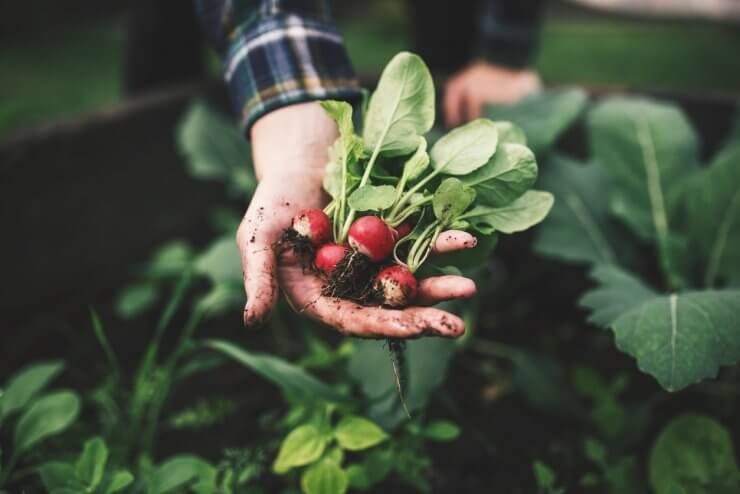
3. Radish leaves and stems
While technically, radish stems are edible, they’re a little tougher in texture and usually thrown out. But these are weird things you can actually eat and turn into a great vegetable broth. Veggie broth, by the way, is a great use for extra vegetable scraps from your garden that would otherwise hit your compost pile.
Radish leaves can also be treated like other leafy greens like spinach or kale and sautéed in olive oil and garlic for a few minutes. Throw in a little red pepper if you dare! Used fresh, radish leaves add a slight peppery dimension to pesto.
Discover 9 garden recipes spotlighting the delicious possibilities of home gardens—when you access the FREEBIE Recipes from Your Garden, right now!
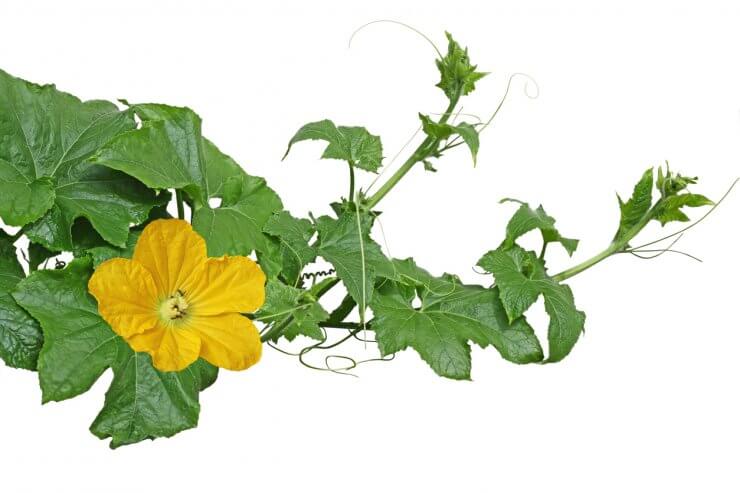
4. Squash shoots
For many, eating squash blossoms is already part of their cooking repertoire. But don’t go throwing away the shoots and leaves. Sauté squash shoots and tendrils (like radish leaves) in oil and garlic, and season with salt and other spices. When cooked, squash leaves and shoots offer a mild spinach-like flavor and can be used similarly in recipes. Include squash, blossoms, and their shoots to create a dish using every bit of the plant.
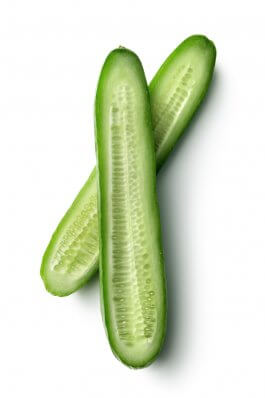
5. Cucumber seeds into microgreens
Did you know you can plant a flat of seeds sliced from your garden cucumber and in a few days have delicious microgreens? Microgreens are great because they are fast-growing. Ready in about a week, these microgreens can be used in soups, or in a salad mix. Their flavor adds a fresh juicy cucumber taste to any recipe.
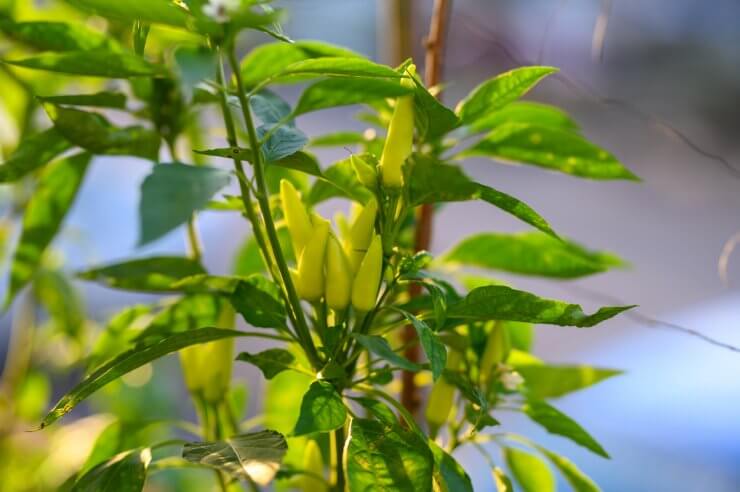
6. Pepper leaves
Cook nearly any type of pepper leaf like you would spinach and render a mild peppery flavor. Don’t worry about using spicy pepper leaves since most of the heat stays with the actual pepper and the leaves remain more subtle in flavor. Featured prominently in Filipino and Chinese dishes, these leaves work well in soups, braises, and stir-fries.
Discover 9 garden recipes spotlighting the delicious possibilities of home gardens—when you access the FREEBIE Recipes from Your Garden, right now!
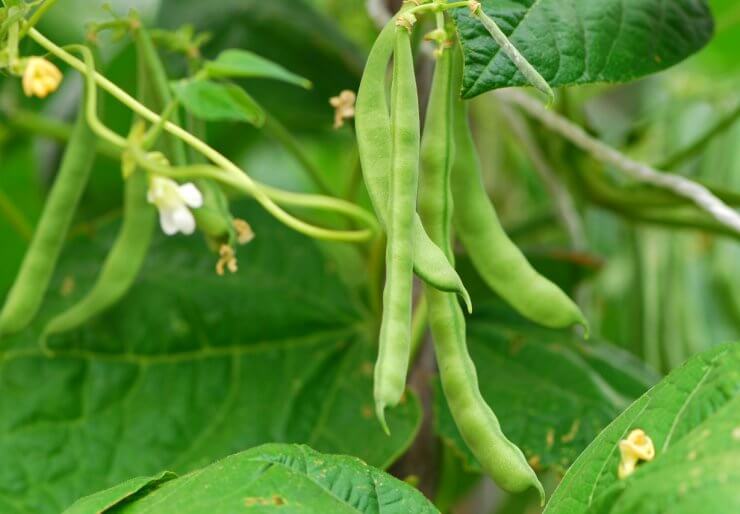
7. Bean greens and bean blossoms
Pea shoots and the leaves from green, runner, fava, lima, and hyacinth beans are totally edible. These leaves make a great salad when leaves are young and tender. For more fibrous leaves and shoots, sauté in oil and use it in your favorite stir-fry recipe. And don’t forget to include the blossoms, which add extra texture and flavor to your stir-fries.
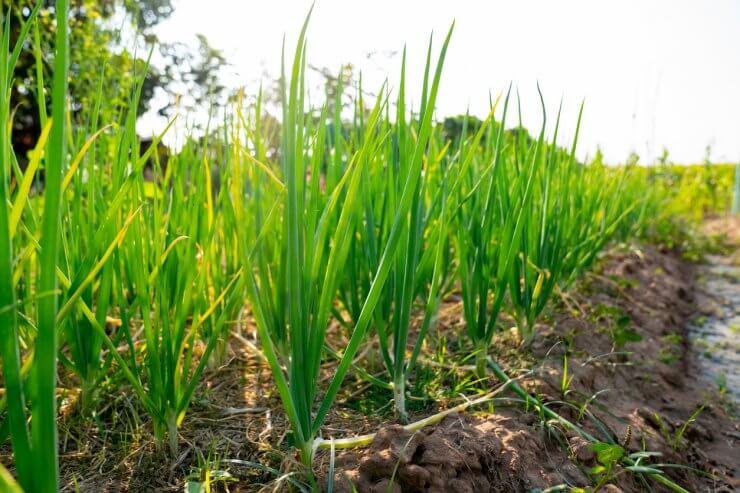
8. Garlic and onion shoots
This might not seem like it should be on a list of weird things you can actually eat. But the cool thing about garlic and onion shoots is that you can just trim what you need for your recipe and the garlic or onion will keep growing. Forget to grab scallions at the supermarket? Just run out to your garden and snip a bit of onion greens. Garlic shoots are easy to grow and are a great substitute for garlic scapes which can sometimes be tricky to find. Use fresh as a garnish or in dips, pestos, and marinades, or saute with your favorite vegetables and proteins and serve over rice.
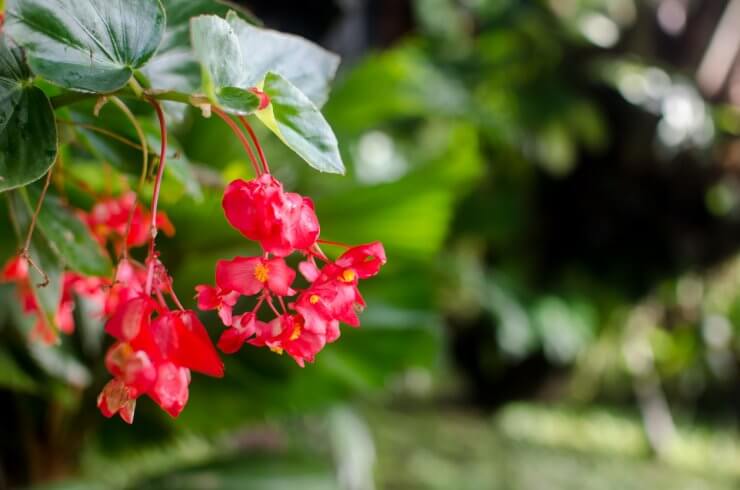
9. Begonia leaves, flowers, and stems
This one is a wild card for some folks who only see begonias as beautiful flowers. But their leaves and flowers add a delicious sour citrus crunch in salads. Their acidity pairs well with a sweeter dressing. Begonia flowers make a lovely garnish on cakes, as well. And the leaves and stems can be eaten raw or cooked like other leafy greens. It’s important to find plants that haven’t been treated with pesticides. Better yet, snag a cutting from your neighbor’s garden and propagate your own!
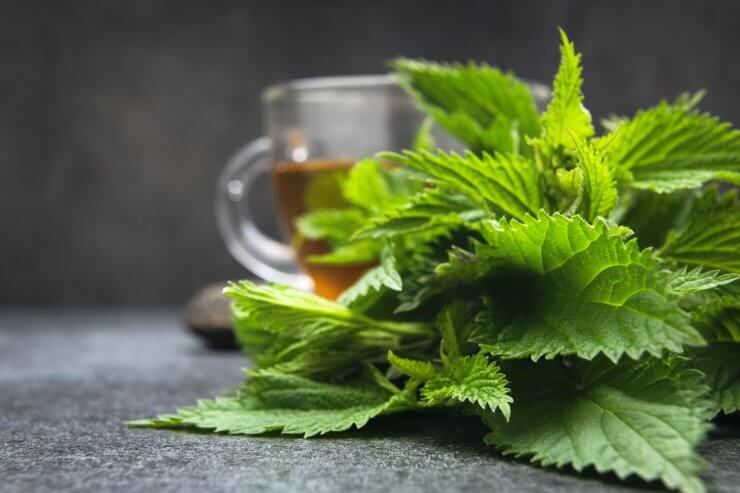
10. Nettles
I saved this one for last because it’s definitely top of my “Weird Things You Can Actually Eat” list. Nettles are weeds and can run rampant in your garden if you’re not careful about picking it before it seeds. Great in soups, salsas, teas, and simply sautéed with oil, nettles must first be “de-sting-ified.” (I think I just made that term up!)
Remove the fuzzy texture and stinging properties of nettles by blanching them in boiling water for about a minute. Swap nettles in place of spinach in pastas and sautés. And there are reportedly some medicinal properties in nettle tea that help with menstrual cramps and urinary tract infections. Nettles, like some herbs, even have some anti-microbial properties. Be careful when growing in your garden and wear gloves because these leaves will sting!
Do you know about other weird things you can actually eat from your garden? Share your strange foods (and recipes) in the comments!
Discover 9 garden recipes spotlighting the delicious possibilities of home gardens—when you access the FREEBIE Recipes from Your Garden, right now!





I planted Kale this year in pots. The Cabbage moth likes the ones directly on the patio. The ones under the window not so much. The difference? I think the Cabbage moths get to see the patio plants more due to the motion light on the patio. Has anyone else noticed this?
I’m finding this list of “strange things” interesting. I’m going to try some of them.
Great info! However, #7 is labeled “Bean greens and bean blossoms” yet the picture and narrative are for peas. So what about beans? Are the leaves and flowers edible? And if I pick the blossoms will the beans still grow where the blossoms no longer exist?
Thanks for all of the fun articles!
Bean greans and bean blossoms are delicious. You will still get beans even if your harvest the flowers because the beans grow from the base of the flower.
WOW. I had no idea squash was something you ate all of. I overbought this year. 15 squash plants, (Im exhausted) for only two of us. So, you can eat the flower? In salads or by themselves and where do I find a recipe? Oh, I have so many questions. lol
Are their actual recipes for squash parts?
Is there a recipe for shoots? And what is a tendril? Oh, oil and garlic, salt, and other spices.
How long do you cook squash leaves and shoots?
Thank you in advance.
Squash blossoms are delicious in salads or deep fried and here’s a great recipe for squash blossom soup: https://foodgardening.mequoda.com/recipe/winter-squash-blossom-soup/.
Tendrils are the parts that grab on and wind around surfaces to support the plant. Just consume them like any other micro-green. The leaves can be prepared similarly to spinach, kale or swiss chard.